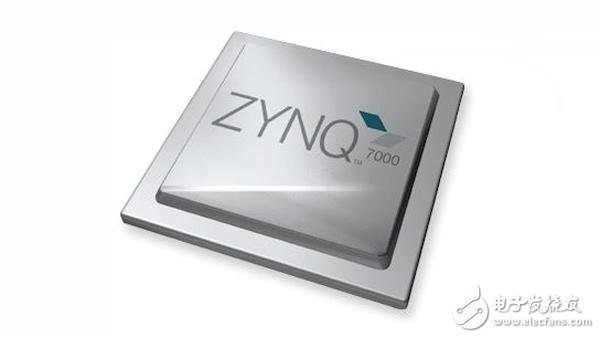The use of Zynq SoC devices enables efficient implementation of major wireless applications, including radio and wireless backhaul, especially for broadcast radio applications. In this application, the Zynq SoC device's on-chip processor core and programmable logic implement the hardware and software for the entire digital front-end processing. Each wireless application has different performance requirements, and an operating system (OS) that meets its capabilities is required.

The wireless digital front-end application is the main part of the Remote Radio (RRH) used in 4G wireless networks. The processing requirements of the application can be divided into signal processing tasks and control processing tasks. Generally speaking, the wireless terminal's control processing tasks are mainly to perform wireless calibration, configuration, alarm, scheduling, and downlink messages from the network. These tasks do not have the high performance requirements, and the above tasks can be easily handled by a software running a single ARM Cortex-A9 processor core in the Zynq SoC.
In terms of signal processing, the Zynq SoC enables high-speed acquisition and filtering in digital up-conversion, crest factor reduction (CFR) and digital pre-distortion (DPD). Due to performance requirements, Zynq SoC's Programmable Logic (PL) is typically used for sample rate conversion and CFR, while Zynq SoC's PS (Processor System) and PL are used to implement DPD. DPD processing can be broken down into high speed data paths and update paths. The update path is used to periodically update the filter bank coefficients. In general, the coefficients are updated in tens of millimeters, so when the Zynq SoC ARM Cortex A9 processor core is embedded in the NEON SIMD vector computing unit to run the software, the task can be performed efficiently.
To support DPD applications and control processing applications, screening the appropriate processing architecture is an important decision because the final choice defines the overall performance, reliability, and ease of maintenance of the system. The most common architecture for screening for radio applications is the AMP (Asymmetric Multiprocessing) mode, which applies the entire ARM processor core running bare metal (without operating system) code to DPD processing. This method provides more computational space to meet the timing requirements for DPD coefficient updates. Other applications, such as control and OAM (orbital momentum) multiplexing, can also be implemented in the second ARM Cortex-A9 processor core through OS control.
Since the OS can only control one of the ARM processor cores in AMP mode, an interprocessor channel must be established between the two applications, such as between OCM (on-chip storage) or shared memory processor cores. Establish a channel. This channel is especially important for some critical control applications, such as those used to monitor the status of DPD modules. This IPC (inter-process communication) solution has no fixed standards and must be developed separately in systems that use the AMP mode.
In contrast, the SMP (Symmetric Multiprocessing) architecture is straightforward, and its single operating system can control the ARM processor core and all applications. IPC, debug and auxiliary tool chains can run under the same operating system. To ensure that sufficient processing resources are invested in DPD applications, specific techniques such as kernel affinity and interrupt masking can be applied. In the former case, the DPD application runs in a kernel, and there is no other task sharing resource in the processor other than the operating system scheduling. In the latter case, to take full advantage of the resources of the first processor core, the DPD application is allowed to directly interrupt the second core (in addition to the interrupt triggered by the DPD application).
With a dual-core ARMCortex-A9 MP core processor, the Zynq SoC supports both AMP and SMP applications.
Note: This article is an excerpt from Yuan Gu's recent paper on the European Microwave Engineering Network (MEEW) "Wireless Applications: Factors to Consider for Zynq Fully Programmable SoC Operating Systems."
Perfect fit: The Hydrogel Screen Protector is designed with a Soft TPU material, which can be completely covered even on a curved device, providing perfect protection for the full coverage of the screen.
Oleophobic and waterproof: The use of hydrophobic and oleophobic screen coatings can prevent sweat, grease residue and fingerprints without reducing screen sensitivity. It is almost invisible on the screen and brings a high-definition visual experience.
Sensitive touch: ultra-thin and Soft Hydrogel Film with a thickness of only 0.14mm. As time goes by, it will self-repair minor scratches, provide you with a highly responsive screen protector and maintain the original touch.
Easy to install: The installation of the Protective Film is very simple, without air bubbles. The protective sticker can stay on the phone perfectly, and the bubbles will disappear within 24 hours.
If you want to know more about Hydrogel Screen Protector products, please click the product details to view the parameters, models, pictures, prices and other information about Hydrogel Screen Protective Film.
Whether you are a group or an individual, we will try our best to provide you with accurate and comprehensive information about the Hydrogel Protective Film!
Hydrogel TPU Protective Film,Ultra-Thin Protective Film,Soft Hydrogel Film,Hydrogel Film Screen Protector,Screen Protective Film,Mobile Phone Screen Guards
Shenzhen Jianjiantong Technology Co., Ltd. , https://www.jjthydrogelmachine.com